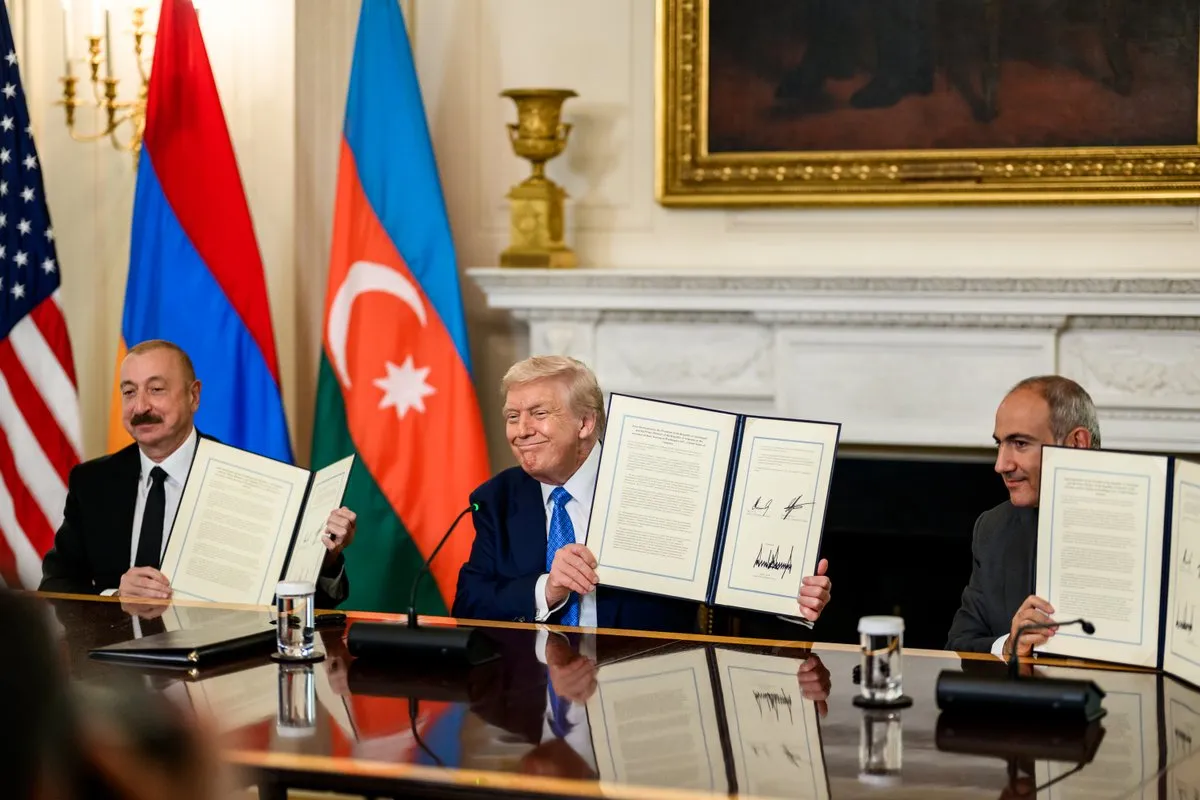
Washington, DC - On August 8, 2025, in a setting few would have imagined just a year ago, Armenian Prime Minister Nikol Pashinyanand Azerbaijani President Ilham Aliyev shook hands at the White House alongside President Donald Trump. The moment capped a high-stakes negotiation aimed at ending decades of hostility between the two South Caucasus nations — and it introduced a bold new project with global strategic implications.

The enmity between Armenia and Azerbaijan traces back to the late Soviet era, when the region of Nagorno-Karabakh— internationally recognized as part of Azerbaijan but populated mainly by ethnic Armenians — became the center of a bitter territorial struggle. After the Soviet collapse, war erupted in the early 1990s. A ceasefire in 1994 froze the front lines but left the dispute unresolved, and periodic flare-ups claimed thousands more lives in the years that followed.
In 2020, a six-week war shifted control of much of Nagorno-Karabakh and surrounding areas to Azerbaijan. Russian peacekeepers were deployed, but tensions remained high. In late 2023, Azerbaijan reasserted full control over the enclave, prompting mass displacement of ethnic Armenians and ending the region’s self-declared government. The bitterness ran deep — and diplomatic progress seemed improbable.
That’s why the White House signing was so unexpected. Not only did it mark a formal cessation of hostilities, it also laid out a framework for normalizing relations and unlocking long-closed borders.
At the heart of the agreement is a narrow strip of southern Armenia known as Zangezur. This area separates mainland Azerbaijan from its Nakhchivan exclave, an isolated region bordering Turkey and Iran.
The new accord creates a secure transit corridor through Zangezur, linking Azerbaijan and Nakhchivan. But in a striking twist, the United States — not Armenia or Azerbaijan — will develop, manage, and secure the route for 99 years.
This corridor will carry a high-profile name:
Trump Route for International Peace and Prosperity (TRIPP).
Plans for TRIPP go far beyond a highway. Proposed infrastructure includes:
For both nations, TRIPP promises faster trade, greater energy connectivity, and an economic boost. For Washington, it represents a rare chance to establish a physical and long-term strategic foothold in the South Caucasus.
While the agreement is being framed as a peace deal, its geopolitical consequences are far-reaching.
The deal also dissolves the OSCE Minsk Group, the decades-old international mediation platform for the conflict, effectively ending a chapter of post-Soviet diplomacy.
Both Aliyev and Pashinyan praised the agreement. Aliyev called it “a great new history for our peoples,” while Pashinyan said it “opens a path to a future free of war.” In a joint gesture, both leaders proposed nominating Trump for the Nobel Peace Prize.
But not everyone is convinced.
Armenian diaspora groups and human rights advocates have raised concerns that the accord:
For now, both governments insist those issues can be addressed in follow-up agreements.
If implemented as envisioned, the TRIPP corridor could:
For the U.S., the project offers a rare intersection of diplomacy, economics, and infrastructure control — a combination that could pay dividends for decades.
The August 8 White House signing may be remembered less as the day Armenia and Azerbaijan ended their war, and more as the day the geopolitical map of the South Caucasus shifted.
Whether TRIPP becomes a genuine route to peace and prosperity — or a new flashpoint — will depend on the ability of all parties to keep promises, share benefits, and resist the pull of old grievances.